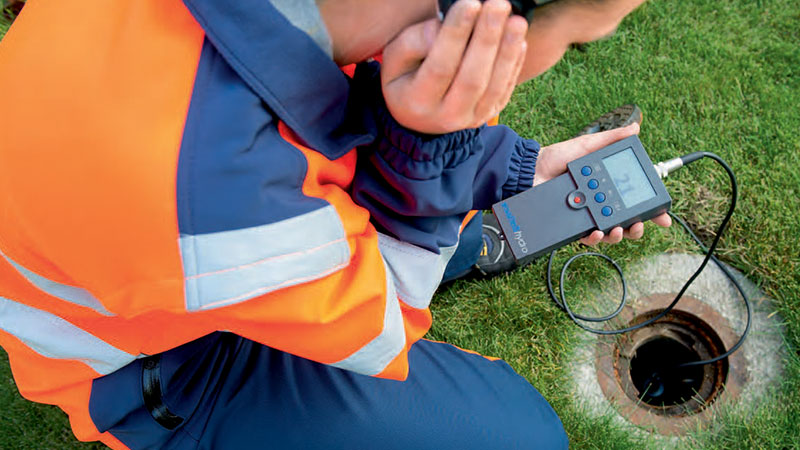Cutting-edge Solutions for Very Early Discovery of Water Leaks in Buildings and Framework
From cutting-edge leakage detection modern technologies to the deployment of IoT sensing units for real-time monitoring, the landscape of leakage prevention is developing quickly. Automated water circulation evaluation systems are improving how leaks are identified and dealt with, leading the means for an aggressive technique to water leak discovery.
Advanced Leakage Detection Technologies
Advanced leakage discovery innovations, equipped with innovative sensing units and algorithms, play a vital function in quickly identifying and determining water leakages in numerous setups. These innovations use a mix of acoustic, thermal, and electro-magnetic picking up methods to identify leaks properly. Acoustic sensors detect the audio of running away water, enabling precise localization of the leakage resource. Thermal imaging detects temperature adjustments brought on by water leak, offering another reliable technique for leakage recognition. Electro-magnetic sensors can determine changes in magnetic fields brought on by water, supplying yet another layer of leak detection capacity.

IoT Sensors for Real-Time Tracking
In the world of modern water leakage detection, the integration of IoT sensors for real-time surveillance represents a critical advancement in enhancing positive leak detection capabilities. These sensors offer continual tracking of water systems, offering real-time information on water flow rates, pressure variants, and temperature adjustments. By leveraging IoT technology, these sensors can discover even the tiniest anomalies in water use patterns, enabling very early recognition of possible leakages before they escalate right into significant issues.
IoT sensing units transfer information to a centralized system, where innovative algorithms analyze the information and produce notifies or notifications when abnormalities are identified. This real-time monitoring ability permits residential or commercial property owners or center managers to without delay deal with leaks, lessening water damages, reducing repair work costs, and saving water resources.
In addition, IoT sensors can be incorporated with structure monitoring systems, enabling computerized feedbacks to discovered leakages, such as shutting down water valves or turning on pumps to reduce the impact of leakages. Generally, the implementation of IoT sensing units for real-time monitoring considerably improves the performance and efficiency of water leakage detection in structures and facilities.
Artificial Intelligence Algorithms for Leakage Forecast

One secret advantage of utilizing equipment learning for leakage prediction is its capacity to constantly find out and improve its accuracy with time. As even more data is accumulated and fed into the formula, it can refine its predictions and adjust to altering conditions, inevitably enhancing the dependability of leakage detection systems.
In addition, artificial intelligence formulas Get the facts can assist in determining refined signs of leaks that might go undetected by traditional surveillance methods. water leak detection. By evaluating complicated data embed in real-time, these formulas can offer very early warnings and notifies, permitting prompt intervention and precautionary upkeep to mitigate possible water damage and associated prices
Using Thermal Imaging for Leakage Detection
Thermal imaging modern technology offers an encouraging approach why not find out more for detecting water leakages in numerous systems and facilities. By using infrared radiation and temperature level variations, thermal imaging cams can determine concealed leaks that are not easily visible to the nude eye.
One of the vital advantages of thermal imaging for leakage detection is its non-intrusive nature. Unlike typical methods that may need getting into wall surfaces or floorings to situate leakages, thermal imaging enables non-destructive screening. This not just conserves time and decreases expenses but likewise decreases interruption to the building or facilities being evaluated. Additionally, thermal imaging can promptly check large locations, giving a detailed overview of potential leak resources in a prompt fashion. In general, the use of thermal imaging modern technology enhances the effectiveness and accuracy of water leak detection, making it a useful tool for preserving the stability of buildings and infrastructures.
Automated Water Circulation Analysis Systems
How can computerized water flow analysis systems transform the detection and monitoring of leakages in different systems and frameworks? Automated water flow evaluation systems provide a positive strategy to leakage detection by constantly monitoring water circulation rates and patterns. By developing standard information, these systems can promptly recognize inconsistencies that may indicate a leakage, allowing prompt treatment to prevent considerable damage.
These systems utilize advanced algorithms to evaluate real-time data and supply immediate signals when abnormalities are detected, enabling swift activity to be taken. Furthermore, automatic water flow evaluation systems can be integrated with building monitoring systems or IoT systems, enhancing general performance and enabling remote tracking capacities.
Furthermore, the data collected by these systems can be made use of for anticipating look what i found upkeep functions, aiding to determine prospective weak factors in the infrastructure prior to leakages happen. Overall, the implementation of automatic water circulation evaluation systems can considerably boost leak discovery and administration methods, eventually resulting in set you back financial savings, reduced water wastefulness, and raised sustainability in buildings and framework.

Final Thought
To conclude, the combination of sophisticated leak detection technologies, IoT sensing units, maker discovering formulas, thermal imaging, and computerized water flow evaluation systems uses cutting-edge solutions for very early discovery of water leaks in buildings and facilities. These modern technologies allow real-time monitoring, forecast of leakages, and efficient detection approaches to stop water damages and wastage. Carrying out these options can aid in keeping the integrity and sustainability of water systems in various settings.